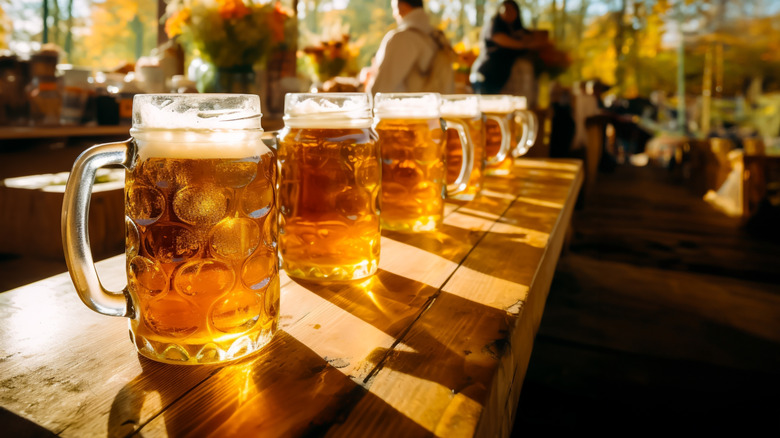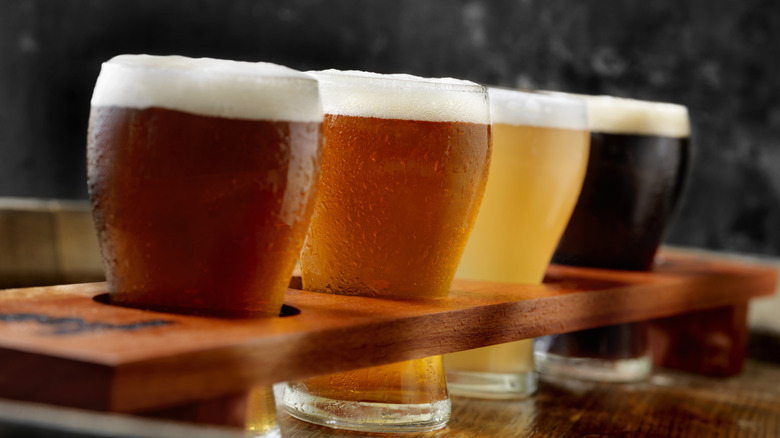German Vs American Beer: What Makes Them Different?
For many American imbibers, the word beer conjures a ubiquitous image of a glass with fizzy, pale liquid and a white foam cap. When Oktoberfest rolls around though, many beer drinkers may trade their usual brand for something more festive, seeking out German beers for the celebration instead. That prompts the question, what is the difference between American and German beers? It turns out, the answer is about much more than whether they pair best with a hotdog or a bratwurst. Of the dozens of styles defined by the Beer Judging Certification Program (along with numerous subcategories), many beers can be classified as German or American, respectively.
Within German beer styles, you'll encounter an array of colors, flavor profiles, and alcohol contents (not to mention suggested types of glassware to drink those beers from), from more robust options like the malty Doppelbock to the famously black Schwarzbier, the smoky Rauchbier to the hazy yellow wheat-based Hefeweizen — and of course, the amber-hued Oktoberfest. You'll also find entries that are closer to what many American drinkers think of when they reach for a brew, like the pale and crisp Pilsner or Helles lager. These styles are so familiar because they're the original archetypes for popular U.S. options like Budweiser and Miller.
Distinguishing modern German and American beers
When comparing lagers, it helps to look at the hops. Hops give beer its bitterness, as well as aroma and taste. A wide variety exists, and like wine, hops can exhibit terroir particular to their place of origin. Germany is renowned for hop production and grows several traditional types known as noble hops, which tend to be characterized as spicy, herbal, grassy, and floral. These contribute signature aromas and flavors in a German-style Pilsner.
Traditional American-style Pilsner (the descendent of the German iteration) shares these noble hop qualities, but the Brewers Association also includes a category for contemporary versions that may "diverge from American-style lagers ... by virtue of a wide range of hop aroma and flavor attributes." This most likely accounts for the development of new hop varieties that give flavors ranging from guava to pine (and a whole lot more).
Thanks to the creativity of today's global brewing industry and its desire to constantly innovate, introducing new styles and variations on traditional ones, the differences between beers from these countries (or any others) can really come down to the brewer's vision. In fact, in 1987, Germany abolished a law known as Reinheitsgebot that predated the founding of the U.S., which limited the ingredients producers could use for their brews, freeing up brewers to get creative. All of this means that if you're interested in comparing the beers of these countries, there's plenty to keep your palate busy.

